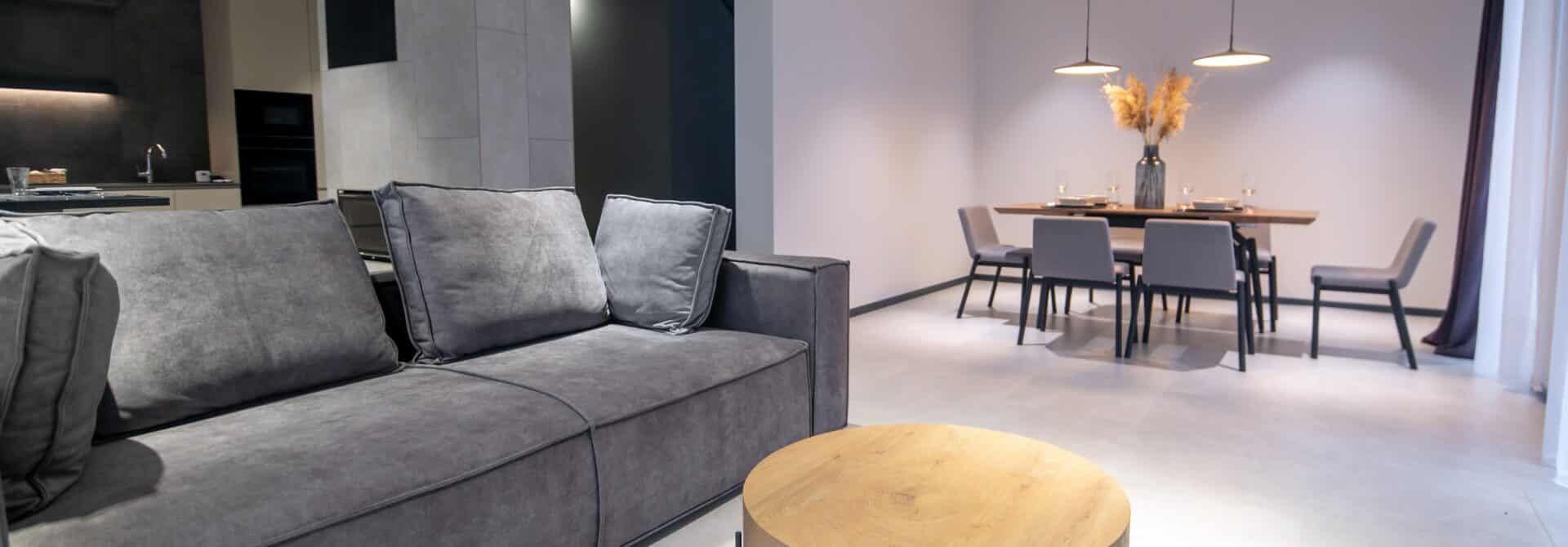
How To Paint Adjoining Living Room and Dining Room
What you love most about your home could also be the thing that stops you from redecorating when the time comes. Knowing how to paint an adjoining living room and dining room can seem tricky, but it doesn’t have to be.
When people start looking for homes, the first thing they ask for is an open floor plan design. They love the idea of being able to work in the kitchen and have easy and unlimited access to other rooms, such as the family room or dining room. Open concept works when you’re living in it. But that changes when it comes time to paint it. Questions like, do I paint my home all one color? Or can you change colors and decorating ideas from room to room – even if everything shares a common wall? Let’s get into it.
Even though adjoining living rooms and dining rooms needn’t be decorated alike, in some cases it may be hard to visualize before you begin. Color has a big impact on each room, so choose your colors with care. Yet don’t be afraid to make a statement – here’s how.
Selecting Paint Colors for Adjacent Rooms
Selecting paint colors for adjacent rooms can seem hard! Here are some tips on how to make it a little easier.
START WITH THE COLOR WHEEL
One of the best tools available to you as you make changes in your home’s color is the color wheel. A color wheel will provide you with complementary colors – choose your favorite and it will help you select coordinating colors to add to your color pallet. When working with adjoining living rooms and dining rooms, choose a color scheme with three different colors for your two rooms. Change out your tones and use colors from light to dark to add interest and depth throughout. Also, be sure to keep in mind the most difficult paint colors to work with, too!
INDIVIDUALIZE AND PERSONALIZE
Work with your painting professional to create a look that is uniquely your own. With paint and decorating, you don’t always have to follow the rules. Chair railings work great in the dining room, with two-toned paint colors separating the two halves of the wall. You can use semi-gloss on one wall and eggshell on another – all for visual effect.
How to Paint an Adjoining Living Room and Dining Room
Now that you have your color scheme chosen, it’s time to tackle the painting! Here’s a breakdown of the whole how-to paint an adjoining living room and dining room process:
1. PREPARE
Thoroughly clean and prep both rooms, removing furniture and wall hangings. Cover floors and doorways with drop cloths.
2. START WITH THE CONNECTING WALL
Begin by painting the large wall that connects the two rooms. This will establish the base color scheme and provide a reference point for the rest of the space.
3. LIGHTER TOUCHES
Once the connecting wall is complete, move on to the other walls. Use lighter shades from your chosen palette to create a sense of openness and flow throughout the adjoining rooms.
4. ACCENTS AND TRIM
For added visual interest, consider painting the trim boards and window frames in a contrasting color – either a lighter or darker shade from your palette.
5. DON’T FORGET THE CEILING
Our last tip for selecting paint colors for adjacent rooms is: Don’t forget the “fifth” wall. While the majority of homes have white ceilings, it’s the perfect place to add color to really change the presentation of the room. For a slight change, go with a lighter shade of your color palette. Or if you have high ceilings, they are perfect candidates for deep intense color.
Bonus Tip: Consider consulting a professional painting company for this type of interior painting service. They can offer expert advice on color selection, application techniques, and ensure a flawless finish that complements your vision.
Go Forth and Paint
Congrats, now you know how to paint an adjoining living room and dining room! If you’re still unsure of what colors to pick or where to start, reach out to Denver’s top painting company, Paint Denver.
